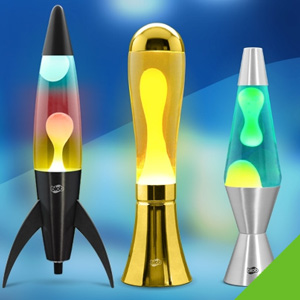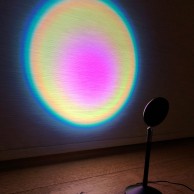Products - The Science behind The Glow Company
The Glow Company makes use of a scientific phenomenon called chemiluminescence – a chemical reaction that creates light. But how, exactly, does chemiluminescence work?
Usually when we want to create light, we also create heat. A flame, whether in a candle or an open fire, is actually made up of tiny particles of incandescent carbon – part of the fuel which is heated to glowing-hot before it is burnt up. A filament light bulb uses electricity to heat a thin strand of wire until it shines brightly; in this case, it is prevented from melting or burning up by enclosing it in a bulb of inert gas, keeping it away from the oxygen a fire needs. However, glow sticks and the other glow in the dark products you’ll find on the Glow Company’s website use a phenomenon called chemiluminescence – a remarkable kind of chemical reaction that produces cold light. This is obviously very different to the kind of light-producing chemical reaction we are used to. So how does it work?
Chemical reactions 101
A chemical reaction involves the exchange of energy between the reactants. In many cases, this energy is felt as heat. In an ‘exothermic’ reaction, heat is released – for example, in the reaction between butane and oxygen from the air that happens in a lighter or a gas stove. In an ‘endothermic’ reaction, heat has to be put in for the reaction to occur – for example, in the case of melting ice, where heat energy enables the molecules of water to break free from their place in a solid lattice. But heat isn’t the only form of energy. Other forms of energy are kinetic (movement), potential (stored, in one form or another) and light. The brilliance of the Glow Company’s chemiluminescent products is created by converting one form of energy into another.
Snap, shake, shine...
A glow stick contains two major chemical compounds, separated from each other by keeping one of them within a glass vial within the outer plastic tube. Once the vial is broken and these compounds mix, a reaction takes place that ultimately results in the release of light. However, it’s not quite as simple as actually using a glow stick might make it appear.
There are different ways of producing chemiluminescence, but one of the most common compounds used is called ‘luminol’. Luminol is a combination of carbon, Hydrogen, Nitrogen and Oxygen with the chemical formula C8H7N3O2. Inside a glow stick, the compound is kept in a solution to help it mix with the other major reactant, which is an ‘oxidising agent’ – that is, a molecule that will give up electrons to another compound, often resulting it gaining an oxygen atom in the process. (Rust, for example, is iron oxide.) The oxidising agent in a glow stick is often something as simple as hydrogen peroxide – best known as a common form of bleach. A catalyst and a hydroxide salt are also required to enable and speed the reaction. A catalyst is a compound which enables a chemical reaction to occur but itself remains unchanged at the end of the process, and can hence be used over and over, and in small amounts. In this case, the catalyst often used is potassium ferricyanide or K3[Fe(CN)6], a compound also used in photography. Incidentally, haemoglobin – the iron compound found in blood – also has the same effect, which is why luminol can be used to detect blood at a crime scene. A hydroxide salt is a compound that splits into two parts, one of which is a hydrogen-oxygen pair. This fragment of a water molecule has a negative charge [OH-], and is balanced by the positive charge in the other half of the salt.
The easy version...
Put simply, luminol reacts with the oxidising agent to produce an unstable compound with excited electrons that release a photon of light as they moves to a stable state.
... and the complicated bit
The reaction doesn’t just proceed straightforwardly, although it looks that way from the outside of the glow stick! In practice, there are a series of steps and halfway stages involving unstable states of the luminol.
Luminol reacts with the negatively charged hydrogen-oxygen ‘anion’ (charged atom or molecule), losing two hydrogen atoms (which form water with the hydroxide ions) and becoming negatively charged itself. The resulting dianion – ‘di-’ because it has two negative charges, one for each lost hydrogen – reacts with oxygen (O2) from the hydrogen peroxide, and loses two nitrogen atoms, forming an unstable compound called 3-aminophthalate. In the process of losing the nitrogen, electrons in the compound are boosted to higher energy states. When the electrons fall back to their lower energy levels, they emit a photon of light, which is what you see from your glow stick.
That’s it. There are other compounds that have the same effect, but they work in broadly similar ways. Worth remembering next time you snap that glow stick and give it a shake...
What's New?
 Tassen Butter Dish - XL
Tassen Butter Dish - XL
 Tassen Vases - Cheeky & Cutie
Tassen Vases - Cheeky & Cutie
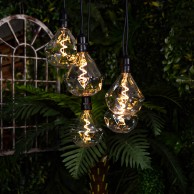 Diamond Outdoor Hanging Chandelier by Luxform
Diamond Outdoor Hanging Chandelier by Luxform
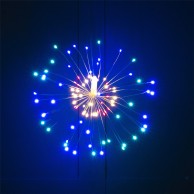 Hanging Firework Light, Remote Controlled & Battery Operated
Hanging Firework Light, Remote Controlled & Battery Operated
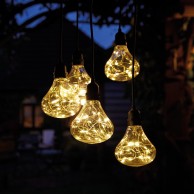 Bubbles Outdoor Hanging Chandelier - Battery Operated
Bubbles Outdoor Hanging Chandelier - Battery Operated
 Digital Luggage Scales
Digital Luggage Scales

